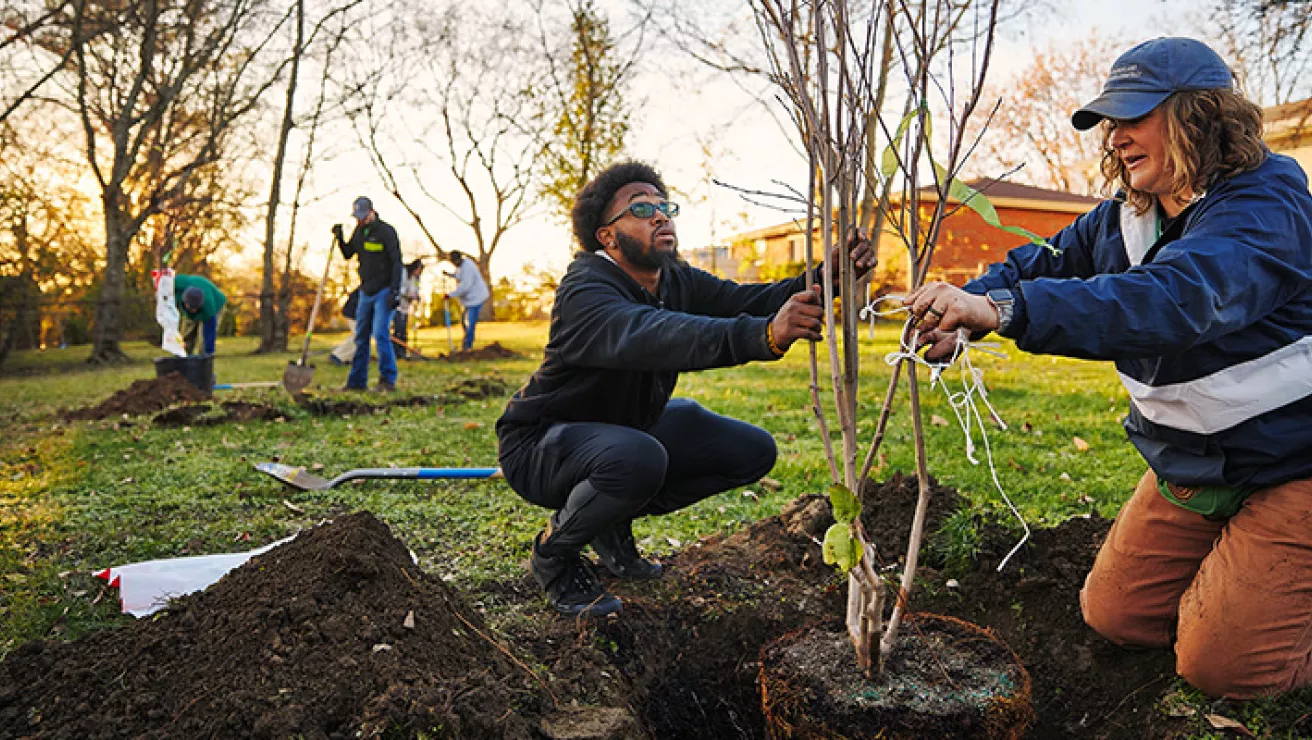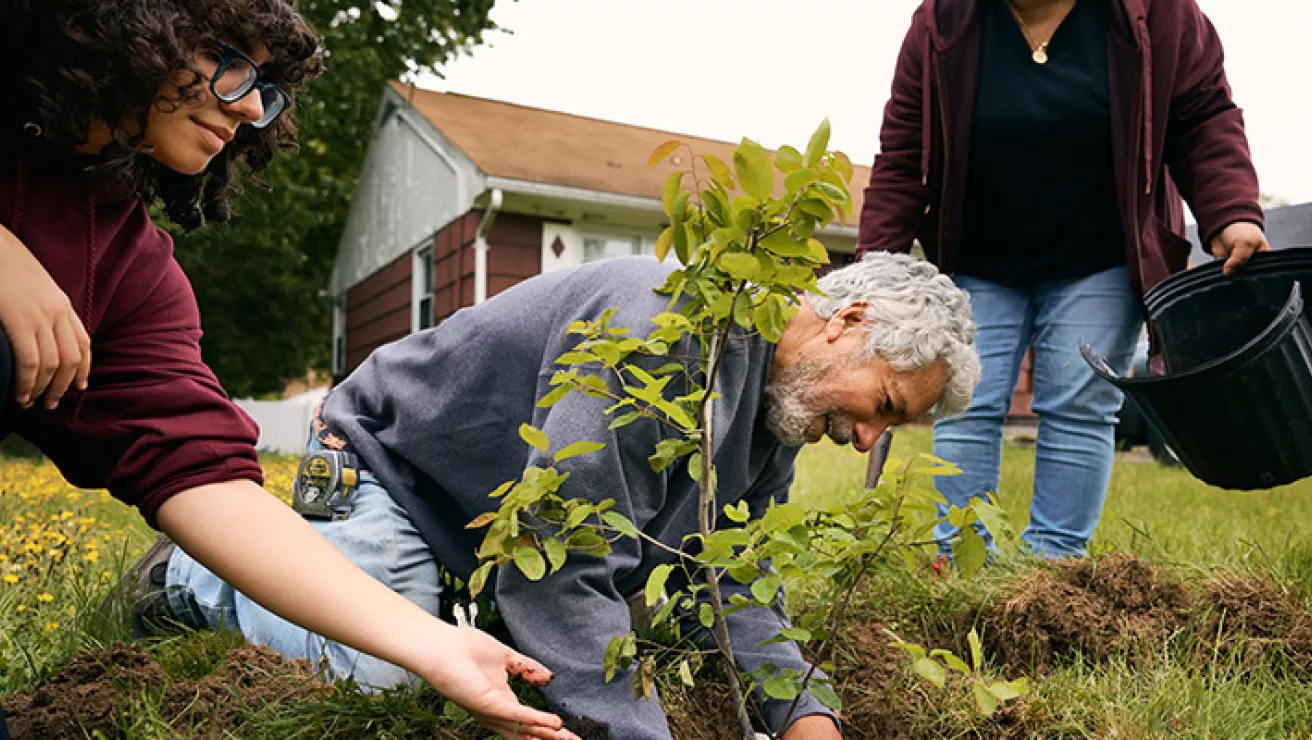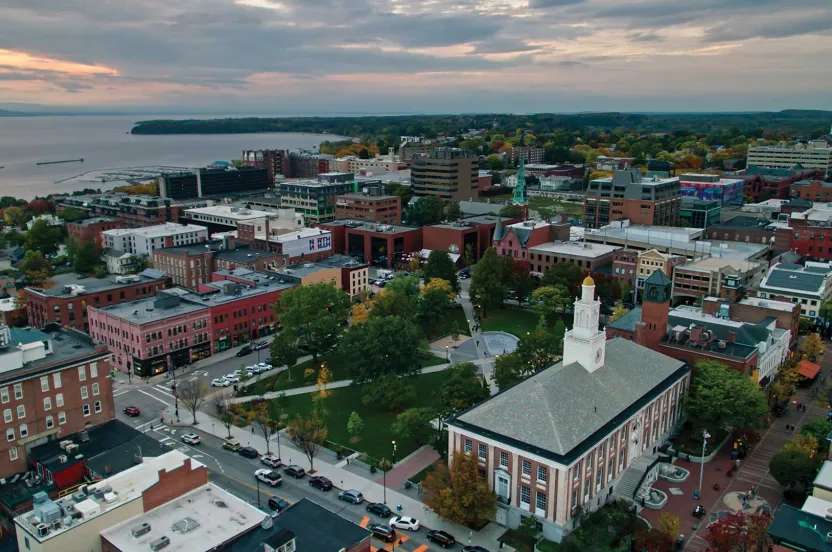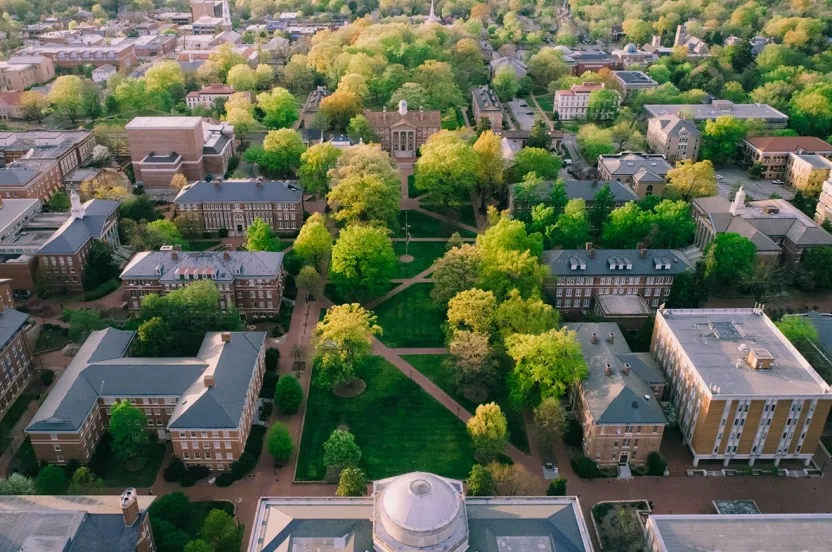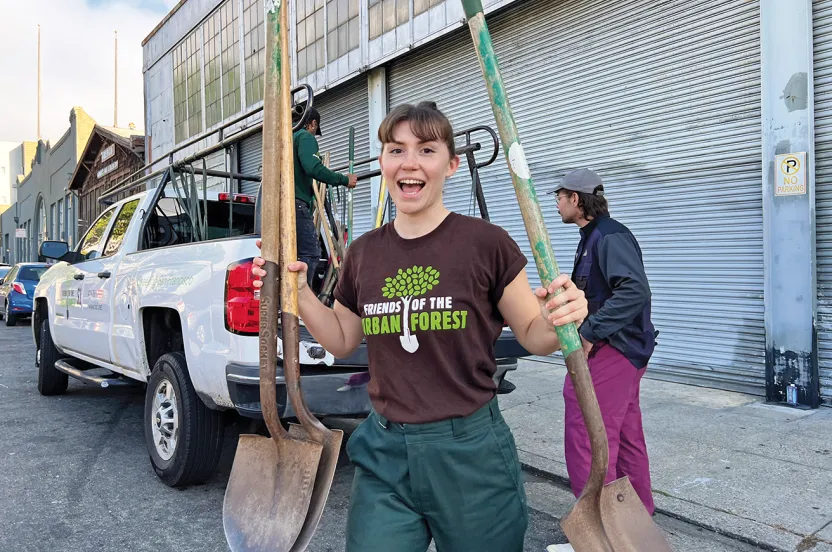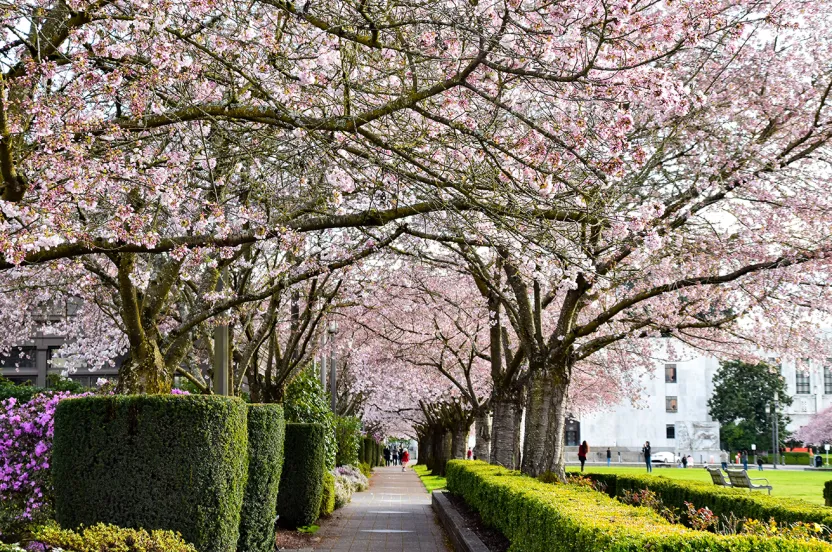A Tree Can Be Relief
Extreme heat is becoming deadly. But trees in the right place stand strong to shield communities.
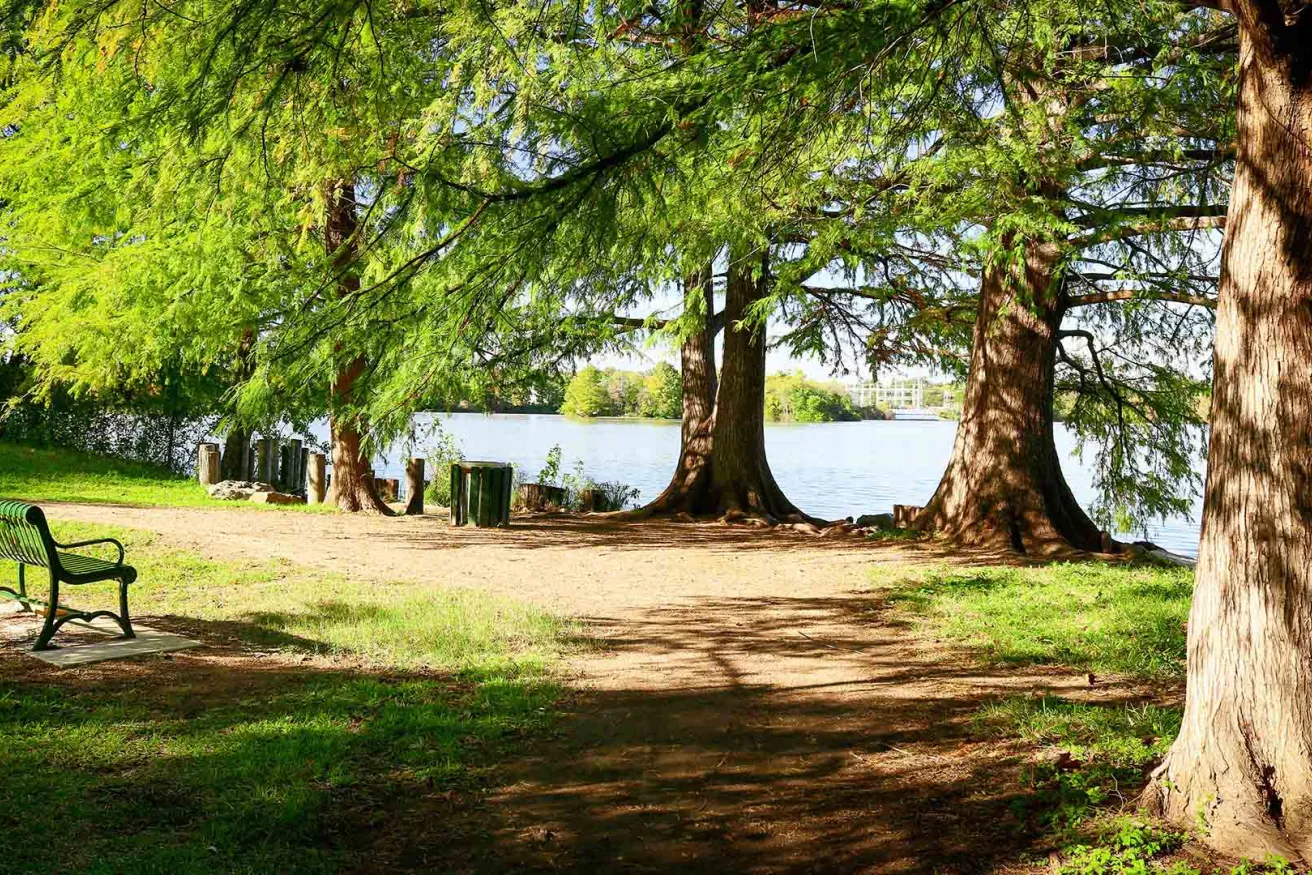
Sweltering. Oppressive. Unbearable.
For people around the world, extreme summer heat is becoming a lasting part of summer break. In the U.S., all-time daily record highs are becoming commonplace as climate change redefines what summertime feels like. Now more than ever, trees can be the answer to one of our most pressing issues.
When Heat Becomes Deadly
Extreme heat isn’t just uncomfortable. The risk of danger rises alongside the temperature. Extreme heat already kills more Americans every year than any other weather event, hurricanes included.
The heat doesn’t subside after sunset, either. According to the World Health Organization, extremely hot days are melting into extremely hot nights, stressing human physiology so seriously that it can be fatal. In heavy humidity, we can’t cool ourselves as easily through sweating, leading to heat exhaustion, stroke, or even death. The elderly, children, outdoor workers, and those with existing health issues are especially at risk.
HEAT HITS DISADVANTAGED COMMUNITIES THE HARDEST
And like nearly all effects of climate change, how you experience extreme heat is often linked with socioeconomic class. Low-income communities, often populated with more non-white residents, deal with extreme surface urban heat significantly more often than wealthier, whiter communities.
Zoom out more, and extreme heat is roasting all urban areas. Concrete, asphalt, and city infrastructure absorb the sun’s heat and spike neighborhood temperatures by 10 degrees or more. Scientists call it the urban heat island effect. And as the entire world becomes increasingly urbanized, it will only worsen without new solutions.
As climate change makes heat waves more frequent, people can be left feeling helpless. But there’s good news to combat these rising temperatures, in the form of a tree.
Because a tree can be a relief.
WHEN THROWING SHADE IS A GOOD THING
Trees can bring potentially life-saving shade to our urban, concrete-caked cities and offer relief to residents who need it most. That shade can lower temperatures by about 10 degrees. Now imagine that kind of impact in the form of a tree-lined boulevard. Or an entire park when temperatures reach triple digits.
These are just a few ways a tree can be relief from our sweltering cities:
- Relief from the sun. Shade from trees dramatically lowering street-level temperatures.
- Relief for our lungs. Trees capture dust, dirt and other airborne particulates to clean our air.
- Relief for our ozone and atmosphere. Trees pull in carbon and pump out oxygen.
The Arbor Day Foundation is proud to be planting 500 million trees by 2027 with a focus on getting trees areas of greatest need. With this approach, we’re on a mission to bring relief from the heat to some of the lowest-canopy areas in the nation.
To be clear, trees won't singlehandedly solve our climate challenges. But they just might be the simplest, most powerful tool at our disposal if we consider what a tree can be.
